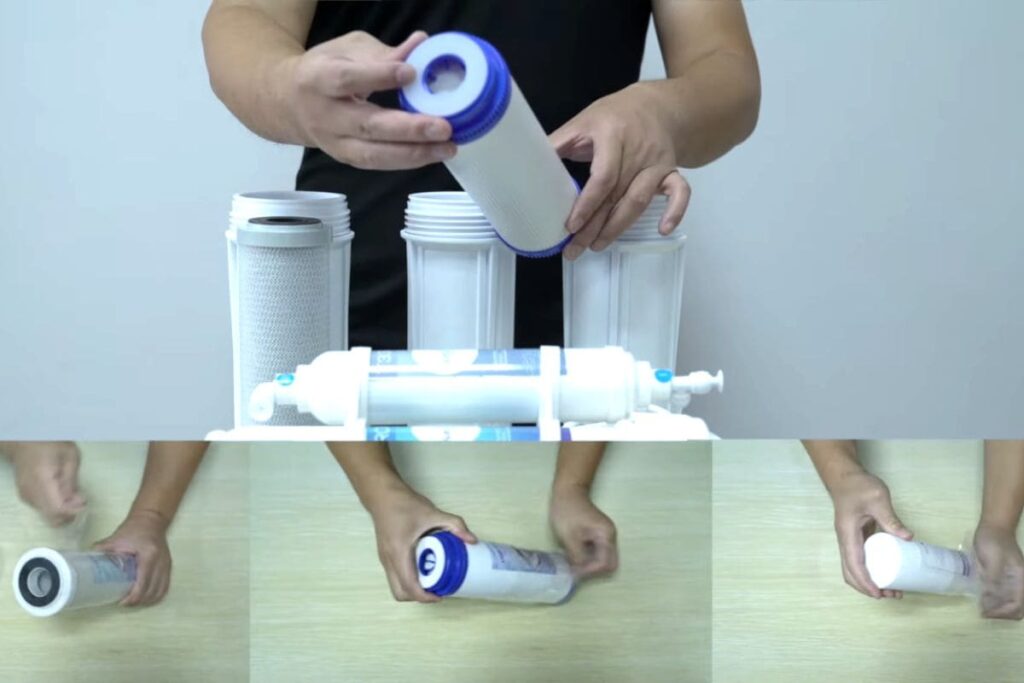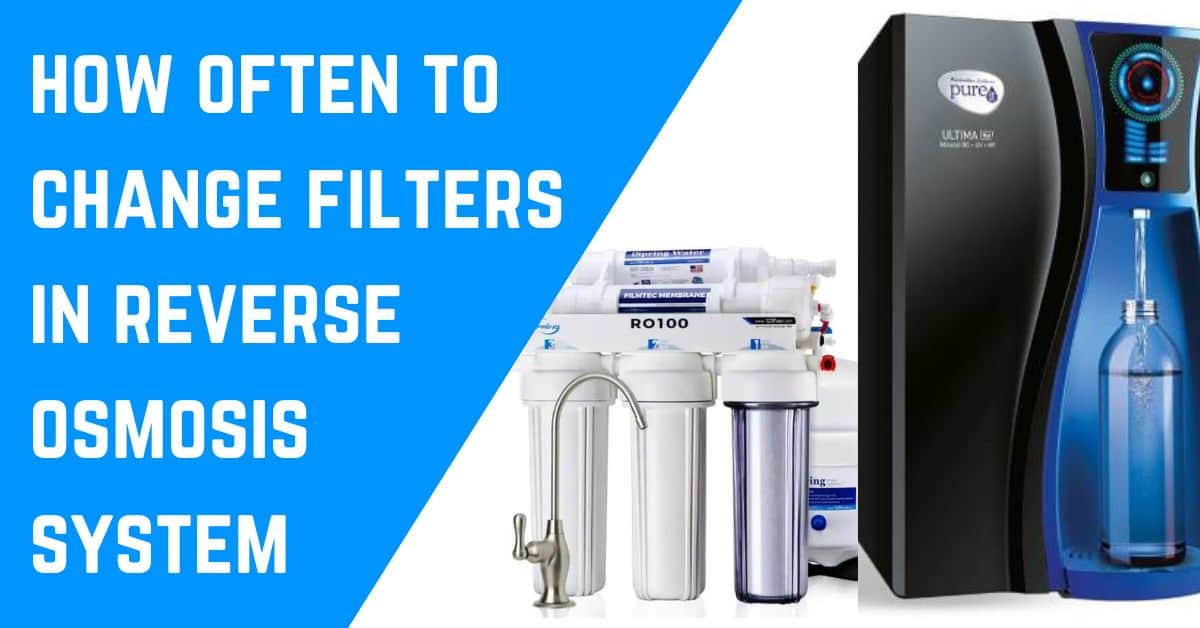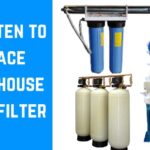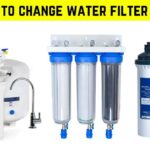While using a reverse osmosis system in your home, you must know how often to change the filters.
Depending on the water quality and how much use your system gets.
Knowing when to replace them will keep your reverse osmosis running smoothly and ensure your family drinks clean water.
How Long Do RO Filters Last?
Reverse osmosis filters are essential to keeping your water clean and safe to drink. But like all filters, they have a limited lifespan and need replacement regularly.
So how often should you need replacement of your RO filter, and what are the signs that it’s time for a change?
One of the essential factors in determining how long your RO filter will last is the quality of your water supply.
If you have pristine source water, your carbon pre-filter will likely last longer than if your water is full of sediment and other contaminants.
Additionally, the type of filter you have will affect its lifespan. Some filters are designed for more extended water usage than others.
Generally, most RO filters should be replaced every 6 to 12 months.
However, it’s a good idea to check your post-filter regularly (at least once a month) and replace it sooner if you notice any changes in water quality or decreased flow rate.
There are several signs that your RO filter is due for replacement, including:

- Your water pressure has dropped. It is usually the first sign that your sediment filter is starting to get clogged and need replacement.
- Your water quality has declined. This can be evidenced by increased levels of contaminants in your water or by a change in taste, odor, or appearance.
- The flow rate from your RO system has decreased. If filling a glass of water takes longer than usual, it’s time for a new filter.
By following these simple guidelines, you can ensure that your RO system continues providing clean, safe water for years.
When Should You Replace The Ro Membrane And Filters?
It is important to regularly replace the RO membrane and filters to maintain optimal water quality and prevent damage to your system.
The replacement frequency will vary depending on the water you are using.
For example, if you have hard water, you must replace these parts more often than soft water.
If you notice a drop in water quality or pressure, it is time to replace the membrane and filtration process.
If your system has been used for over two years, it is also time for a replacement.
Mostly the RO membrane can work better for 2 to 5 years, and other filters need replacement every 12 months.
Following these guidelines ensures that your RO system works correctly and provides clean, safe water for your home or business.
Why Do You Need To Change A Reverse Osmosis Pre-Filters System?
It effectively removes impurities from your water, including bacteria, viruses, and metals.
However, apartment reverse osmosis systems require regular maintenance to keep them working correctly.
One of the essential parts of maintaining a reverse osmosis system is changing the pre-filter regularly.
The pre-filter removes larger particles from the water before it enters the reverse osmosis membrane.
Over time, the pre-filter will become clogged with these particles, reducing the system’s efficiency and allowing contaminants to slip through.
For this reason, it’s essential to change your pre-filter regularly. Depending on your system type, you may need to change it every 6 months.
If you’re unsure how often to change your pre-filter, consult your owner’s manual or contact the manufacturer.
Why Does Reverse Osmosis System Need To Change Carbon Filters?
A reverse osmosis carbon filter is an essential component of RO systems.
Carbon filters remove impurities from water, including chlorine, chemicals, and dissolved organic matter.
However, over time, the pores in the carbon filter can become clogged with these impurities.
This can decrease the efficiency of the RO system and lead to problems with taste and odor. For this reason, it is essential to change the carbon filter regularly.
The frequency with which you need to change your carbon filter will depend on the quality of your water and the amount of water used.
A general rule of thumb is to change the filter every 6 months to 1 year.
Suppose you notice a decrease in water quality or an increase in sediment. In that case, replacing the filter sooner is a good idea.
Why Should The Filters And Cartridges Be Replaced?
It is recommended that you replace the sediment pre-filters and cartridges every 3 to 6 months, depending on how often you use them and how well you maintain the water.
Doing this will ensure your house stays clean, clear, and free of harmful bacteria and contaminants.
Replacing the carbon post-filters and cartridges regularly also helps prolong your system’s life. It is affordable and time-saving in the long run by preventing costly maintenance.
What If It’s Less Than A Year, And The Filters Already Show Problems?
If you have a water filter more minor than a year old and already see problems, it could be due to a few different things.
It could be that the filter is faulty, or it could be that the water in your area is particularly hard or dirty.
Suppose you suspect that the water in your area is the problem. In that case, you can use a different filter or filtration system.
You can contact the manufacturer for assistance if you think the problem may be with the filter housing itself.
In either case, staying on top of any problems with your water filter is essential to ensure that you and your family are always getting safe, clean drinking water.
Why Is Reverse Osmosis System Maintenance Important?
Reverse osmosis systems are essential in many industries, including water treatment and desalination.
Properly maintaining these systems is essential to continue operating effectively and efficiently.
There are several reasons why reverse osmosis system maintenance is so essential.
First, these systems rely on several components, all of which must be kept clean and in good working order. Suppose even one component is not functioning correctly. The system can be thrown off balance and may not work as effectively in that case.
Second, because systems remove impurities from water, it is essential to regularly check the quality of the water that is being produced. It can help identify any potential problems with the system and allow for corrective action to be taken.
Finally, regular maintenance can also help extend the life of a reverse osmosis water filter. Keeping the system clean and well-maintained can help ensure it will last many years.
Therefore, osmosis system maintenance is essential to ensuring that these systems continue functioning correctly and producing quality water.
If you have a RO, perform regular maintenance checks and take any necessary corrective action to keep your system operating at peak efficiency.
What Water Quality Should Be Coming Out Of Your Ro System?
Here are some guidelines to help you understand what water quality standards your RO system should meet.
RO systems are designed to remove impurities from water, including dissolved minerals, bacteria, viruses, and other contaminants.
The water from an RO system should be safe to drink and use for cooking and cleaning.
In general, however, you should expect your RO system to produce water that is:
- Free of dissolved minerals: It removes dissolved minerals from water by passing the water through a semipermeable membrane with a slightly acidic pH, which is safe to drink.
- Free of bacteria and viruses: The RO systems kill bacteria and viruses from water by a membrane and ultraviolet tube.
- Free of other contaminants: It eliminates other contaminants from the water like zink, Iron, Lead, and Copper.
If you notice any water quality problems coming out of your RO system, contact a qualified technician to service the system.
An RO system can provide years of safe, clean water for your home or business with proper maintenance.
You can get some best tips for maintenance and best performance:
Conclusion: (How Often To Change Filters In Reverse Osmosis System)
You know that changing filters in your reverse osmosis system depends on the quality of your water source, the amount of water you use, and the level of contaminants in your water.
Please get in touch with us if you have any questions about when to change your filters or need help determining which filter is suitable for your Reverse Osmosis system.
We’re always happy to help!






